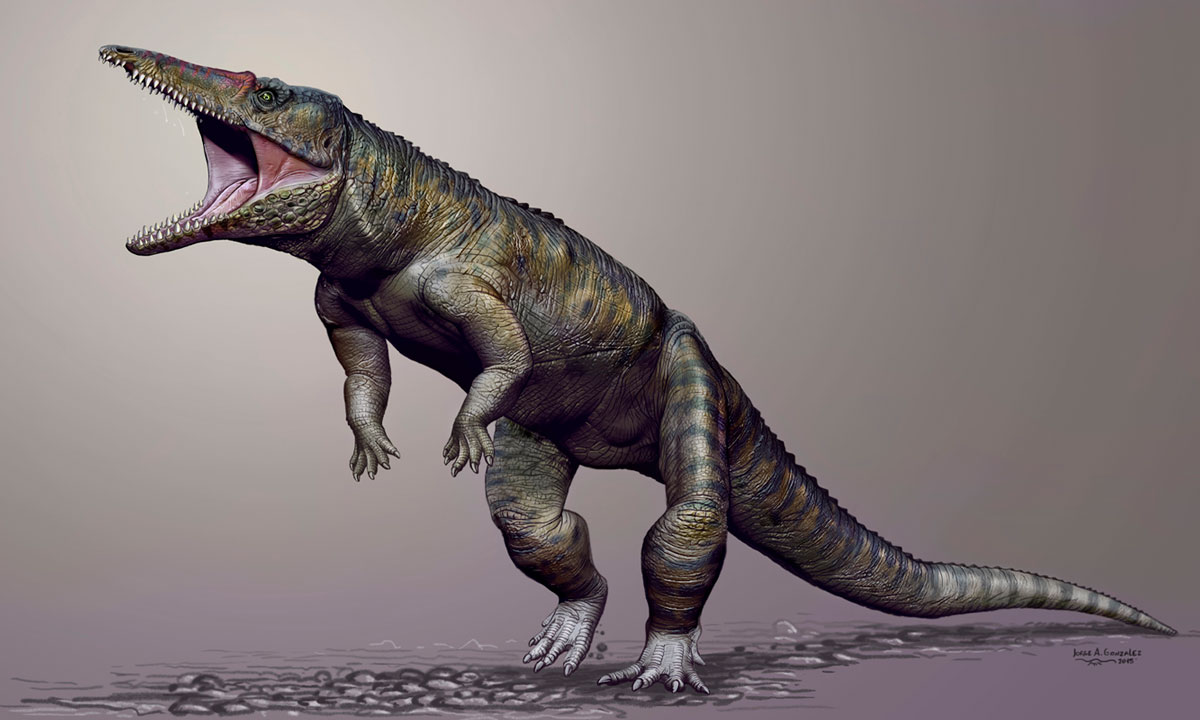
If you thought crocodiles were intimidating, you might be horrified to know that an aggressive, 9-ft-long crocodilian predator once patrolled its North American hunting grounds on hind legs, snacking on small mammals and reptiles.
Carnufex carolinensis — also known as the “Carolina Butcher” — existed long before the dinosaurs rose to dominance, roughly 230 million years ago. The creatures are related to today’s crocodilans, but researchers suspect that they were much less easygoing than modern species like the American crocodile. They were also unexpectedly large top-tier predators, which is surprising since early crocodylomorphs were generally small-bodied, terrestrial animals that hung out somewhere in the middle of the food chain.
“We knew that there were too many top performers on the proverbial stage in the Late Triassic,” said Lindsay Zanno, who published a study on the species in 2015. “Yet, until we deciphered the story behind Carnufex, it wasn’t clear that early crocodile ancestors were among those vying for top predator roles prior to the reign of dinosaurs in North America.”
Fossils of the unusual reptile were discovered in Late Triassic sediments of North Carolina’s Pekin Formation. The bones were pulled from a quarry, and included fragments of the skull, vertebrae, and upper forearm.

Researchers knew they had found something unique even before preparing the fossils. This particular species stood out from the get-go, as it was much larger than other crocodilians living at the time, and had a much more ornate skull, with bumps and grooves adorning the surface.
In fact, Zanno described Carnufex carolinensis as a “bit of a Frankenstein,” possessing a mix of other crocodile ancestors with “a couple predatory dinosaur traits thrown in for good measure,” according to Smithsonian.com. Its jaws were extremely powerful, and the animal could like have easily bitten through mammals and armored reptiles.
It’s unknown how the species disappeared from the planet, but scientists believe they likely died out during a massive extinction event that led to the rise of the dinosaurs.




